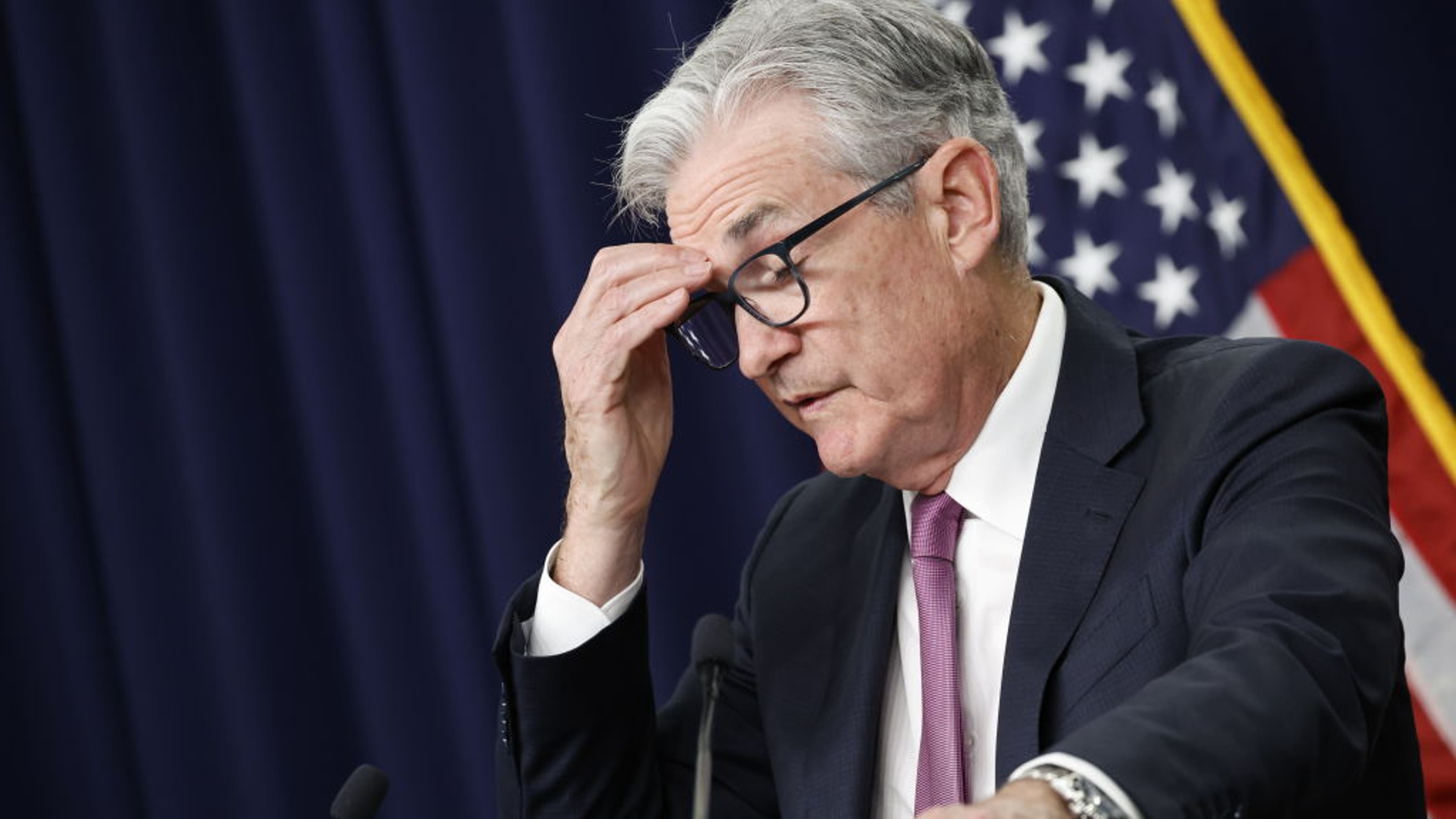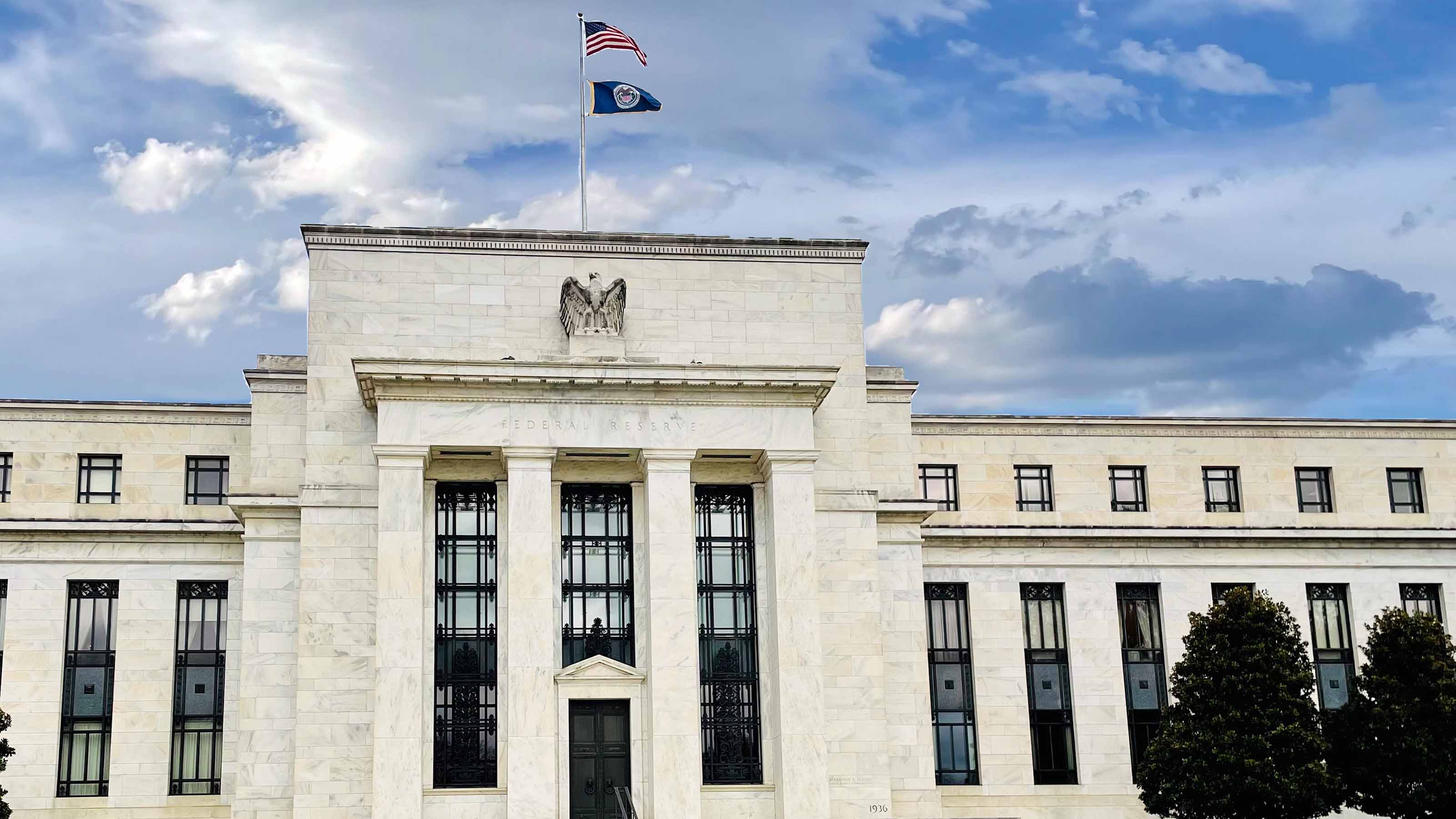Fed Leaves Interest Rates Unchanged: What the Experts Are Saying
The Federal Reserve stood pat on interest rates but left the door open to future hikes.


It turns out that the Federal Reserve doesn't go to 11.
After 10 consecutive interest rate hikes, the central bank's Federal Open Market Committee (FOMC) made the widely expected move of leaving interest rates unchanged when it concluded its regularly scheduled two-day policy meeting on Wednesday.
The so-called "super hawkish pause" puts at least a temporary hold on the Fed's most aggressive campaign of tightening since the late Carter and early Reagan administrations. The Fed first began raising rates in March 2022 in response to the worst bout of inflation to hit the U.S. economy in four decades.

Sign up for Kiplinger’s Free E-Newsletters
Profit and prosper with the best of expert advice on investing, taxes, retirement, personal finance and more - straight to your e-mail.
Profit and prosper with the best of expert advice - straight to your e-mail.
But now, after 500 basis points (5 percentage points) of rate hikes in a little more than a year, the Fed decided to stand pat, leaving the short-term federal funds target rate at 5.0% to 5.25%.
Whether the Fed returns to rate hikes at the next Fed meeting very much remains to be seen. The FOMC's hawkish statement left the door wide open to more tightening in the months ahead. As of June 14, interest rate traders assigned a 71% probability to the central bank raising rates by a quarter of a percentage point when it convenes in July. A week earlier, odds of a quarter-point hike in July stood at 50%.
Fed Chair Jerome Powell has said repeatedly that the Fed's policy decisions will be "data dependent," and Wednesday's policy choice certainly appears to have followed that rule. Headline inflation continued to cool last month, with prices rising on an annual basis at the slowest pace in more than two years, the May Consumer Price Index (CPI) report showed Tuesday.
Although core inflation, which excludes volatile food and energy costs, remained stubbornly elevated, experts said the May CPI report supported the case for the Fed to leave rates unchanged in June.
With the FOMC's latest decision now a matter of record, we turned to economists, strategists, investment officers and other pros for their thoughts on what it means for markets, macroeconomics and monetary policy going forward. Please see a selection of their commentary, sometimes edited for brevity or clarity, below.
What the experts are saying

"Today's decision to pause on policy actions was consistent with recent labor market and inflation data. But with the economy proving resilient, downside risks from banking stress fading, debt limit uncertainty behind us and inflation still hovering above target, we are unsurprised that the Fed has also hinted that 'additional policy firming' may be warranted, with the median projection for the Fed funds rate at the end of the year rising from 5.1% in March to 5.6%." – Whitney Watson, global co-head of fixed income at Goldman Sachs Asset Management
"The choice to forgo an additional hike in June doesn't come as much of a surprise, especially with the cooling CPI and PPI prints this week, but Fed members have continued to signal that this decision is more of a skip rather than an outright pause. The intention behind this is to give the committee the time to assess the lagged effects of the rate hikes to this point, especially as credit conditions have become tighter on households and businesses after the recent banking turmoil. While investors wouldn't complain about extending a rally further supported by easing inflationary pressures the Fed has remained steadfast on their goal to return inflation back to 2% and don't want to let off the brake and risk inflation reaccelerating." – Clayton Allison, portfolio manager at Prime Capital Investment Advisors
"Investors had expected policymakers to keep rates on hold, but the more hawkish tone came as some surprise, with two extra hikes penciled in by half of the officials sitting on the committee. While the Fed insists future decisions will be driven by further data, it seems policymakers are expecting further economic snapshots to show that inflation is remaining stubborn. The new dot plot sparked a sell off on stocks on Wall Street with recent high enthusiasm ebbing away as investors assess plenty of hurdles ahead before the chance of rate cuts finally appears on the horizon in 2024." – Susannah Streeter, head of money and markets at Hargreaves Lansdown
"Why bother pausing? Good grief. If the Fed really thinks it will need to hike rates two more times, then why didn't it tighten policy today? Especially after the terrific internals in the May consumer and producer price report. Tightening further as the Fed talks about policy lags and into its own projection of a growth recession is playing with fire." – David Rosenberg, founder and president of Rosenberg Research
"The evolution of the Summary of Economic Projections [SEP] was interesting. The median expectation for growth was raised; the expected unemployment rate was lowered; and the core PCE inflation projection was raised. The FOMC penciled in an incremental additional hike to reflect as necessary to address that strength. So we're moving further away from our target, but we're hoping against hope that some of the prior tightening will exert itself before the next meeting. I think we'll look back on this meeting as a triumph of hope over experience." – Brad Conger, deputy chief investment officer at Hirtle Callaghan & Co.
"This is definitely a 'hawkish' skip, with clear communication of more rate hikes coming and no capitulation on the idea the Fed wants to see an 'economic landing.' The outlook for two additional hikes this year exceeded the one hike expected and lessens the positive impact of a decline in headline CPI while putting the focus squarely on the stickier core number. The statement is pretty clear: we are not done yet." – Steve Wyett, chief investment strategist at BOK Financial
"People expected a hawkish pause and they got a very hawkish pause. Given the strong labor market, the Fed has room to crush inflation and they don't want to miss their chance. Still, policymakers skipped hiking rates so they can monitor the data. This increases the importance of each incremental economic report. More good news like this week's CPI and PPI could let traders look past the Fed's tough talk and see a dovish turn later in the year. Jerome Powell is still a barking dog, but he may be losing his bite." – David Russell, vice president of market intelligence at TradeStation
"With this decision it is clear that the Fed is not concerned with what markets believe the federal funds rate needs to be and that it is steadfast with its conviction to bring down inflation by continuing to increase the federal funds rate. It is clear that, as we have said before, the Fed is convinced that in order to prevent markets from bringing longer-term interest rates down, it needs to continue to push the federal funds rate, which is the only interest rate it controls, higher. However, this doesn't mean that it will increase interest rates after the July FOMC meeting, as it can do it during the September, October/November, and/or December meeting." – Eugenio Alemán, chief economist at Raymond James
"Markets recoil at Fed statement: this is a skip, not a pause. The FOMC statement surprised markets by acknowledging a skip for today's meeting, but made it clear they expect two more rates may be necessary to quell inflation. Jerome Powell will be walking a monetary tightrope at the press conference as he tries to explain how the skip is really a prelude to more hikes – not a pause." – Quincy Krosby, chief global strategist at LPL Financial
"The Fed has more rate hikes up its sleeve with the July meeting deemed 'live' by Chair Powell. We agree." – Michael Gregory, deputy chief economist at BMO Capital Markets
"While today’s headline decision was a pause, there were very hawkish undertones in Powell’s press conference as he indicated further rate increases were still likely in 2023. It could be questioned why increases weren’t continued this meeting with that sentiment, but it seems reasonable to take a step back and allow for the prior 10 increases to roll through the next round of economic data releases before tightening further." – Ben Vaske, investment strategist at Orion Portfolio Solutions
"Oops, he did it again. Powell throws cold water on the market." – Gina Bolvin, president of Bolvin Wealth Management Group
Get Kiplinger Today newsletter — free
Profit and prosper with the best of Kiplinger's advice on investing, taxes, retirement, personal finance and much more. Delivered daily. Enter your email in the box and click Sign Me Up.

Dan Burrows is Kiplinger's senior investing writer, having joined the august publication full time in 2016.
A long-time financial journalist, Dan is a veteran of MarketWatch, CBS MoneyWatch, SmartMoney, InvestorPlace, DailyFinance and other tier 1 national publications. He has written for The Wall Street Journal, Bloomberg and Consumer Reports and his stories have appeared in the New York Daily News, the San Jose Mercury News and Investor's Business Daily, among many other outlets. As a senior writer at AOL's DailyFinance, Dan reported market news from the floor of the New York Stock Exchange.
Once upon a time – before his days as a financial reporter and assistant financial editor at legendary fashion trade paper Women's Wear Daily – Dan worked for Spy magazine, scribbled away at Time Inc. and contributed to Maxim magazine back when lad mags were a thing. He's also written for Esquire magazine's Dubious Achievements Awards.
In his current role at Kiplinger, Dan writes about markets and macroeconomics.
Dan holds a bachelor's degree from Oberlin College and a master's degree from Columbia University.
Disclosure: Dan does not trade individual stocks or securities. He is eternally long the U.S equity market, primarily through tax-advantaged accounts.
-
 The AI Doctor Coming to Read Your Test Results
The AI Doctor Coming to Read Your Test ResultsThe Kiplinger Letter There’s big opportunity for AI tools that analyze CAT scans, MRIs and other medical images. But there are also big challenges that human clinicians and tech companies will have to overcome.
By John Miley Published
-
 The Best Places for LGBTQ People to Retire Abroad
The Best Places for LGBTQ People to Retire AbroadLGBTQ people can safely retire abroad, but they must know a country’s laws and level of support — going beyond the usual retirement considerations.
By Drew Limsky Published